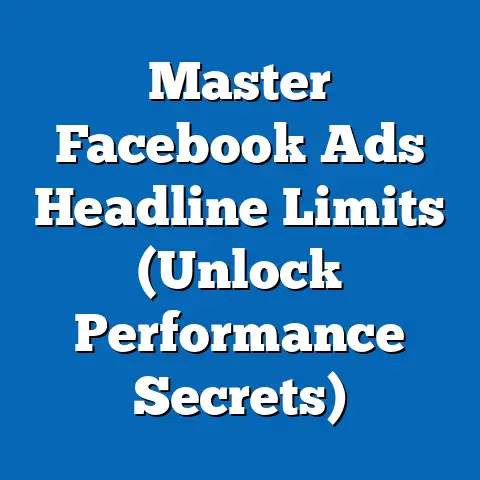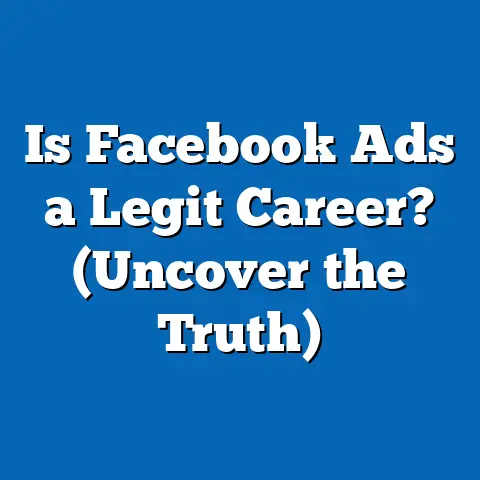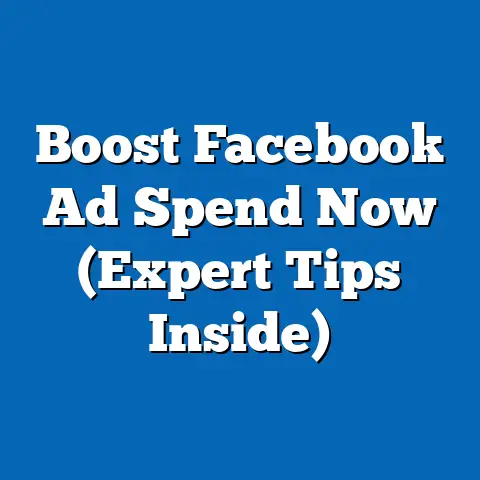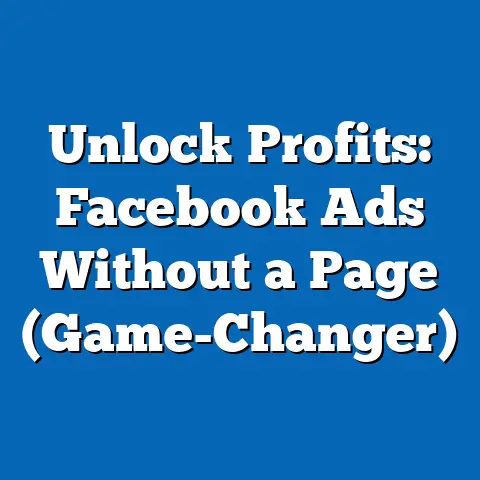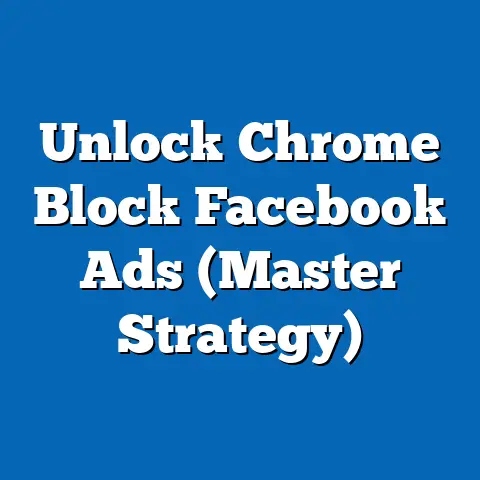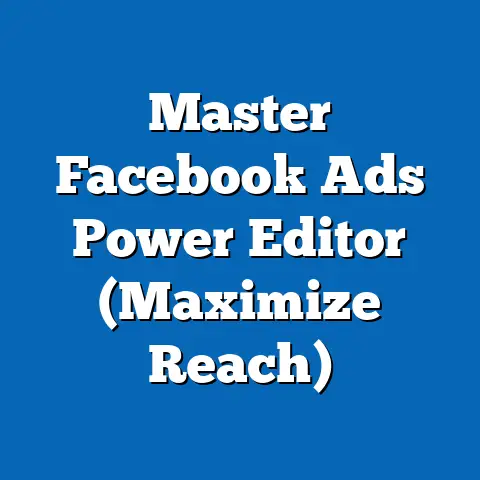Boost Engagement with Facebook Game Ads (Proven Strategies)
Have you ever poured your heart and soul into creating a game, only to watch it struggle to gain traction? I’ve been there. I remember working tirelessly on a mobile game project years ago, convinced it was the next big thing. We launched with a flurry of excitement, but the download numbers quickly plateaued, and player engagement was abysmal. We were throwing money at generic Facebook ads, hoping something would stick, but it felt like shouting into a void.
It was a frustrating and disheartening experience. We were on the verge of pulling the plug when a colleague suggested diving deeper into Facebook’s game-specific advertising options. Skeptical but desperate, we decided to give it one last shot. What followed was nothing short of a revelation. By tailoring our ads to resonate with the specific motivations and desires of gamers, we saw a dramatic turnaround. Player engagement soared, our community grew, and the game found its audience.
This experience ignited my passion for understanding the nuances of Facebook Game Ads. Traditional advertising methods often fall short in the gaming industry. Why? Because gamers aren’t just consumers; they’re members of a vibrant community driven by unique passions and values. To truly connect with them, you need to speak their language, understand their motivations, and offer them experiences that resonate on a deeper level.
Understanding Facebook Game Ads
Overview of Facebook Game Ads
Facebook Game Ads are a specialized type of advertising specifically designed for promoting games on the Facebook platform. Unlike standard Facebook ads, Game Ads offer unique formats, features, and targeting options tailored to the gaming audience. These ads are designed to showcase gameplay, highlight unique features, and drive installs or engagement within a game.
Think of it this way: standard ads are like casting a wide net, hoping to catch anyone interested in your general product category. Game Ads, on the other hand, are like using a specialized fishing rod with the perfect bait to attract the specific type of fish (gamers) you’re looking for.
Key Differences from Standard Facebook Ads:
- Focus on Gameplay: Game Ads often prioritize showcasing actual gameplay footage or interactive elements, giving potential players a taste of what to expect.
- Game-Specific CTAs: Call-to-action buttons are typically geared towards gaming actions, such as “Play Now,” “Install Now,” or “Learn More about the Game.”
- Targeting Options: Enhanced targeting options allow you to reach specific gaming demographics, interests, and behaviors.
- Creative Formats: Game Ads support various creative formats, including playable ads, video ads, and image ads, each designed to maximize engagement.
Purpose of Facebook Game Ads:
- Drive Installs: Primarily, Game Ads aim to drive installs of mobile or PC games by showcasing their appeal to potential players.
- Increase Engagement: They can also be used to re-engage existing players, announce new content updates, or promote in-game events.
- Build Brand Awareness: Game Ads help build brand awareness for your game studio and establish a presence within the gaming community on Facebook.
Formats of Facebook Game Ads:
- Image Ads: Simple yet effective, image ads use visually appealing graphics and concise copy to grab attention.
- Video Ads: Video ads are ideal for showcasing gameplay, highlighting unique features, and creating a more immersive experience.
- Playable Ads: These interactive ads allow users to play a short demo of the game directly within the ad, providing a hands-on experience.
- Carousel Ads: Carousel ads display multiple images or videos in a scrolling format, allowing you to showcase different aspects of your game.
- Collection Ads: Collection ads combine a main image or video with a selection of related products or items, creating a visually engaging shopping experience.
Statistics and Trends
The gaming industry is booming, and Facebook remains a significant platform for game advertising. Here are some key statistics and trends to consider:
- Global Gaming Market: The global gaming market is projected to reach over \$300 billion by 2025, showcasing the immense potential for growth. (Source: Newzoo)
- Mobile Gaming Dominance: Mobile gaming accounts for a significant portion of the gaming market, making Facebook a prime platform for reaching mobile gamers.
- Facebook Gaming Audience: Facebook has millions of active users who engage with gaming content, providing a vast audience for game advertisers.
- Video Ad Effectiveness: Video ads consistently outperform other formats in terms of engagement and conversion rates, making them a popular choice for game advertising.
- Personalization: Personalized advertising, which uses user data to tailor ads to individual preferences, is becoming increasingly important for driving engagement.
Peak Usage Times:
Understanding when your target audience is most active on Facebook is crucial for maximizing ad effectiveness. Generally, peak usage times occur in the evenings and weekends. However, it’s essential to analyze your own audience data to identify specific peak times for your target demographic.
Factors Contributing to Ad Effectiveness:
- Compelling Visuals: High-quality images and videos that showcase gameplay and capture attention.
- Engaging Ad Copy: Concise and persuasive copy that highlights the game’s unique features and benefits.
- Precise Targeting: Reaching the right audience with relevant interests and gaming habits.
- Clear Call-to-Action: Guiding users to take the desired action, such as installing the game or visiting the website.
- Mobile Optimization: Ensuring that ads are optimized for mobile devices, given the prevalence of mobile gaming.
The Psychology of Gamers
To create truly engaging Game Ads, it’s crucial to understand the psychology behind why gamers engage with ads. What motivates them? What are their desires and behaviors?
Motivations:
- Entertainment: Gamers seek entertainment and enjoyment. Your ads should showcase the fun and excitement of your game.
- Challenge: Gamers enjoy challenges and overcoming obstacles. Highlight the difficulty and strategic elements of your game.
- Community: Gamers are often part of a community and enjoy connecting with others. Showcase the social aspects of your game.
- Progression: Gamers like to see progress and improvement. Highlight the leveling system, achievements, and rewards in your game.
- Immersion: Gamers seek immersive experiences that transport them to another world. Showcase the story, characters, and atmosphere of your game.
Desires:
- Novelty: Gamers are always looking for new and exciting games to play. Highlight the unique features and innovations of your game.
- Exclusivity: Gamers appreciate exclusive content and rewards. Offer special bonuses or incentives for those who install your game through the ad.
- Recognition: Gamers want to be recognized for their achievements and skills. Highlight leaderboards, rankings, and competitive elements in your game.
- Belonging: Gamers want to belong to a community and connect with like-minded individuals. Showcase the social features and community events in your game.
Behaviors:
- Research: Gamers often research games before downloading them. Provide detailed information and reviews in your ads.
- Comparison: Gamers compare different games to find the best one for them. Highlight the unique advantages of your game over competitors.
- Social Sharing: Gamers share their gaming experiences with others on social media. Encourage social sharing by incorporating social features into your game.
- Feedback: Gamers provide feedback to developers to help improve their games. Listen to player feedback and incorporate it into your game design.
Takeaway: Understanding these motivations, desires, and behaviors is crucial for crafting Game Ads that resonate with your target audience and drive engagement. Remember, you’re not just selling a game; you’re selling an experience.
Crafting Compelling Game Ads
Visual Elements
Visuals are the first thing that grabs attention in any ad, and this is especially true for Facebook Game Ads. In a world of endless scrolling, your visuals need to be captivating enough to make users stop and take notice.
Key Considerations for Visuals:
- High-Quality Images and Videos: Use high-resolution images and videos that are visually appealing and professional-looking. Avoid blurry or pixelated visuals.
- Showcase Gameplay: The best visuals showcase actual gameplay footage, giving potential players a taste of what to expect.
- Highlight Unique Features: Focus on the unique features and aspects of your game that set it apart from competitors.
- Create Emotion: Use visuals that evoke emotion, such as excitement, suspense, or humor.
- Mobile Optimization: Ensure that your visuals are optimized for mobile devices, as most Facebook users access the platform on their phones.
Examples of Successful Game Ads with Compelling Visuals:
- Clash of Clans: Their ads often feature dynamic gameplay footage with explosions, epic battles, and humorous characters.
- Candy Crush Saga: Their ads use bright, colorful visuals with satisfying animations and sound effects.
- PUBG Mobile: Their ads showcase intense action sequences, realistic graphics, and competitive gameplay.
Best Practices for Images:
- Use eye-catching graphics: Choose images that are vibrant, colorful, and visually appealing.
- Include a clear call-to-action: Add a call-to-action button or text overlay to guide users to take the desired action.
- Optimize for mobile: Ensure that your images are optimized for mobile devices and load quickly.
- Test different variations: A/B test different images to see which ones perform best.
Best Practices for Videos:
- Keep it short and sweet: Aim for videos that are 15-30 seconds in length.
- Capture attention in the first few seconds: Start with a hook that grabs the viewer’s attention immediately.
- Showcase gameplay: Highlight the most exciting and engaging aspects of your game.
- Add music and sound effects: Use music and sound effects to enhance the immersive experience.
- Include a clear call-to-action: Add a call-to-action button or text overlay to guide users to take the desired action.
Ad Copywriting
While visuals grab attention, ad copywriting seals the deal. Your ad copy needs to be concise, persuasive, and tailored to the gaming audience.
Key Considerations for Ad Copywriting:
- Speak the Language of Gamers: Use language that resonates with gamers, such as gaming terminology, humor, and references.
- Highlight Unique Benefits: Focus on the unique benefits and advantages of your game over competitors.
- Create a Sense of Urgency: Use language that creates a sense of urgency, such as limited-time offers or exclusive bonuses.
- Address Pain Points: Identify the pain points of gamers and offer solutions through your game.
- Keep it Concise: Keep your ad copy concise and easy to read, as users have short attention spans.
Techniques for Engaging Ad Copy:
- Storytelling: Tell a story that captures the imagination and draws the user into the game world.
- Humor: Use humor to make the ad more memorable and engaging.
- Intrigue: Create a sense of mystery or intrigue that makes users want to learn more.
- Questions: Ask questions that prompt users to think about their gaming preferences.
- Testimonials: Include testimonials from other players to build credibility and social proof.
Importance of Clear Calls-to-Action (CTAs):
Your call-to-action (CTA) is the most important part of your ad copy. It tells users exactly what you want them to do.
Examples of Effective CTAs:
- Play Now: Directs users to play the game immediately.
- Install Now: Prompts users to install the game on their mobile device.
- Learn More: Guides users to a landing page with more information about the game.
- Join the Community: Encourages users to join the game’s community on Facebook.
- Get a Free Bonus: Offers users a free bonus or reward for installing the game.
Takeaway: Compelling ad copy is essential for driving engagement and conversions. Use language that resonates with gamers, highlight unique benefits, create a sense of urgency, and include a clear call-to-action.
Interactive Elements
In today’s digital landscape, static ads are becoming less effective. To truly capture the attention of gamers, you need to incorporate interactive elements into your Game Ads.
Types of Interactive Elements:
- Polls: Ask users questions about their gaming preferences or opinions.
- Quizzes: Create quizzes that test users’ knowledge of gaming trivia or your game’s lore.
- Mini-Games: Include playable mini-games directly within the ad, giving users a taste of the gameplay experience.
- Scratch Cards: Offer users the chance to win prizes or bonuses by scratching a virtual card.
- Spin the Wheel: Allow users to spin a virtual wheel to win different rewards.
Benefits of Interactive Elements:
- Increased Engagement: Interactive elements encourage users to actively participate with the ad, leading to higher engagement rates.
- Higher Retention: Interactive elements keep users engaged for longer periods of time, increasing the likelihood that they’ll take the desired action.
- Better Brand Recall: Interactive elements make the ad more memorable and increase brand recall.
- Valuable Data: Interactive elements provide valuable data about user preferences and behaviors, which can be used to optimize your ad campaigns.
Examples of Interactive Game Ads:
- Playable Ads: These ads allow users to play a short demo of the game directly within the ad.
- Interactive Video Ads: These ads allow users to interact with the video by clicking on different elements or making choices.
Takeaway: Incorporating interactive elements into your Game Ads is a powerful way to increase engagement, retention, and brand recall. Experiment with different types of interactive elements to see what works best for your game and target audience.
Targeting the Right Audience
Demographic Targeting
Targeting the right audience is crucial for the success of any advertising campaign, and Facebook provides a wealth of demographic targeting options to help you reach your ideal players.
Key Demographic Factors to Consider:
- Age: Target users within the age range that is most likely to be interested in your game.
- Gender: Target users based on their gender, depending on the genre and theme of your game.
- Location: Target users based on their geographic location, such as country, region, or city.
- Interests: Target users based on their interests, such as specific gaming genres, franchises, or hobbies.
- Education: Target users based on their education level, which can be relevant for certain types of games.
- Job Title: Target users based on their job title, which can be useful for reaching specific demographics.
Identifying and Segmenting Your Target Audience:
- Research: Conduct market research to identify the demographics of your ideal players.
- Analytics: Analyze your existing player data to identify common demographic characteristics.
- Competitor Analysis: Analyze the demographics of your competitors’ players to identify potential target audiences.
- Surveys: Conduct surveys to gather information about your target audience’s preferences and behaviors.
Takeaway: Demographic targeting is a fundamental aspect of Facebook Game Ads. By carefully identifying and segmenting your target audience, you can ensure that your ads are reaching the right people.
Custom Audiences and Lookalike Audiences
Facebook’s custom audiences and lookalike audiences are powerful tools for reaching highly targeted groups of users.
Custom Audiences:
Custom audiences allow you to target users based on your existing data, such as:
- Email Lists: Upload your email list to target users who have subscribed to your newsletter or made a purchase.
- Website Traffic: Target users who have visited your website or specific pages on your website.
- App Activity: Target users who have downloaded or used your mobile app.
- Facebook Engagement: Target users who have engaged with your Facebook page or ads.
Lookalike Audiences:
Lookalike audiences allow you to reach new users who are similar to your existing customers or fans.
How to Create Lookalike Audiences:
- Choose a Source Audience: Select a source audience, such as your email list, website traffic, or Facebook page fans.
- Choose a Lookalike Size: Select a lookalike size, which determines how closely the lookalike audience will resemble your source audience.
- Create the Audience: Facebook will create a lookalike audience based on the characteristics of your source audience.
Benefits of Custom and Lookalike Audiences:
- Improved Targeting: Reach highly targeted groups of users who are most likely to be interested in your game.
- Increased Conversion Rates: Drive higher conversion rates by targeting users who are more likely to take the desired action.
- Reduced Ad Costs: Lower your ad costs by targeting users who are more likely to engage with your ads.
Takeaway: Custom and lookalike audiences are essential tools for maximizing the effectiveness of your Facebook Game Ads. By leveraging your existing data and Facebook’s algorithms, you can reach highly targeted groups of users and drive better results.
A/B Testing
A/B testing is the process of comparing two versions of an ad to see which one performs better. This is a crucial step in optimizing your ad campaigns and maximizing your return on investment.
Key Elements to A/B Test:
- Visuals: Test different images and videos to see which ones resonate best with your target audience.
- Ad Copy: Test different headlines, descriptions, and calls-to-action to see which ones drive the most engagement.
- Targeting: Test different audience segments to see which groups yield the highest conversion rates.
- Placement: Test different ad placements, such as Facebook News Feed, Instagram Feed, or Audience Network, to see which ones perform best.
- Bidding: Test different bidding strategies to see which one maximizes your ROI.
Analyzing Results and Making Data-Driven Decisions:
- Track Key Metrics: Track key metrics such as impressions, clicks, conversions, and cost per acquisition.
- Identify Winners: Identify the variations that perform best based on your key metrics.
- Implement Changes: Implement the winning variations into your ad campaigns.
- Repeat the Process: Continuously A/B test your ads to optimize performance over time.
Takeaway: A/B testing is an ongoing process that is essential for optimizing your Facebook Game Ads. By continuously testing different variations and analyzing the results, you can make data-driven decisions that improve your ad performance and maximize your ROI.
Timing and Frequency
Optimal Posting Times
Timing is everything, especially when it comes to Facebook Game Ads. Knowing when your target audience is most active on the platform can significantly impact your ad performance.
General Guidelines for Optimal Posting Times:
- Evenings: Most Facebook users are active in the evenings, after work or school.
- Weekends: Weekends tend to have higher engagement rates than weekdays.
- Specific Time Zones: Consider the time zones of your target audience and adjust your ad scheduling accordingly.
Data-Backed Recommendations:
While general guidelines can be helpful, it’s essential to analyze your own audience data to identify specific peak times.
- Facebook Insights: Use Facebook Insights to monitor your audience’s activity patterns and identify peak usage times.
- Third-Party Tools: Utilize third-party tools to analyze Facebook usage data and identify optimal posting times.
Takeaway: Optimal posting times can vary depending on your target audience and the specific characteristics of your game. By analyzing your own audience data and experimenting with different ad schedules, you can identify the best times to run your Facebook Game Ads.
Ad Frequency Management
Ad frequency refers to the number of times a user sees your ad. While it’s important to show your ads frequently enough to stay top-of-mind, it’s equally important to avoid ad fatigue, which occurs when users become annoyed or indifferent to your ads due to overexposure.
Strategies for Managing Ad Frequency:
- Frequency Capping: Set a frequency cap to limit the number of times a user sees your ad per day or week.
- Audience Segmentation: Segment your audience and target different ads to different groups of users.
- Ad Rotation: Rotate your ads regularly to keep them fresh and engaging.
- Creative Refresh: Refresh your ad creatives periodically to avoid ad fatigue.
Techniques to Refresh Ads and Rotate Creatives Effectively:
- New Visuals: Update your ad visuals with new images or videos.
- Updated Ad Copy: Revise your ad copy to highlight new features or benefits.
- Different Calls-to-Action: Experiment with different calls-to-action to see which ones drive the most engagement.
- Vary Ad Formats: Mix up your ad formats, such as image ads, video ads, and playable ads.
Takeaway: Ad frequency management is crucial for maintaining user interest and avoiding ad fatigue. By setting frequency caps, segmenting your audience, and refreshing your ad creatives regularly, you can ensure that your ads remain engaging and effective.
Utilizing Facebook Insights
Facebook Insights is a powerful tool that provides valuable data about your audience and ad performance. By analyzing this data, you can gain insights into what’s working and what’s not, and make data-driven decisions to optimize your ad campaigns.
Key Metrics to Monitor:
- Impressions: The number of times your ad was displayed.
- Reach: The number of unique users who saw your ad.
- Clicks: The number of times users clicked on your ad.
- Click-Through Rate (CTR): The percentage of users who clicked on your ad after seeing it.
- Conversions: The number of users who took the desired action, such as installing the game or visiting the website.
- Cost Per Acquisition (CPA): The cost of acquiring a new customer or user.
- Return on Ad Spend (ROAS): The revenue generated for every dollar spent on advertising.
Tips for Adjusting Strategies Based on Real-Time Data:
- Identify Underperforming Ads: Identify ads that are not performing well and pause or revise them.
- Scale Winning Ads: Scale up the budget for ads that are performing well.
- Refine Targeting: Refine your targeting based on the demographics and interests of users who are engaging with your ads.
- Adjust Bidding: Adjust your bidding strategy to maximize your ROI.
- Experiment with New Creatives: Continuously experiment with new ad creatives to see what resonates best with your audience.
Takeaway: Facebook Insights is an invaluable resource for monitoring ad performance and making data-driven decisions. By analyzing key metrics and adjusting your strategies based on real-time data, you can optimize your Facebook Game Ads and drive better results.
Engaging with the Audience Post-Ad
Building a Community
Driving installs is just the first step. Building a thriving community around your game is essential for long-term success and player retention. Facebook provides several tools to help you foster a strong community.
Strategies for Using Facebook Groups, Pages, and Events:
- Facebook Groups: Create a Facebook Group for your game where players can connect, share tips, and discuss the game.
- Facebook Pages: Use your Facebook Page to share news, updates, and behind-the-scenes content about your game.
- Facebook Events: Create Facebook Events to promote in-game events, tournaments, and community gatherings.
Tips for Keeping Players Engaged Beyond the Initial Ad Interaction:
- Regular Content Updates: Post regular content updates to keep players informed and engaged.
- Community Management: Actively manage your Facebook Group and Page by responding to comments, answering questions, and fostering discussions.
- Contests and Giveaways: Run contests and giveaways to reward players for their loyalty and engagement.
- Live Streams: Host live streams to showcase gameplay, answer questions, and interact with players in real-time.
- Collaborations: Collaborate with other game developers or influencers to cross-promote your games and reach new audiences.
Takeaway: Building a community around your game is essential for long-term success. By using Facebook Groups, Pages, and Events, you can connect with players, foster discussions, and keep them engaged beyond the initial ad interaction.
User-Generated Content
User-generated content (UGC) is any content created by your players, such as screenshots, videos, reviews, and testimonials. UGC is a powerful tool for building brand loyalty, increasing engagement, and driving organic growth.
How to Encourage User-Generated Content and Testimonials:
- Run Contests: Run contests that reward players for creating and sharing UGC.
- Feature UGC: Feature UGC on your Facebook Page and other social media channels.
- Ask for Reviews: Encourage players to leave reviews on the Facebook App Store and other platforms.
- Create a Hashtag: Create a hashtag for your game and encourage players to use it when sharing UGC.
- Run Surveys: Conduct surveys to gather feedback and testimonials from players.
Impact of Community-Driven Content on Brand Loyalty and Engagement:
- Increased Trust: UGC is more trusted than traditional advertising, as it comes from real players.
- Enhanced Engagement: UGC is more engaging than traditional content, as it is more authentic and relatable.
- Stronger Brand Loyalty: UGC fosters a sense of community and belonging, which leads to stronger brand loyalty.
- Organic Growth: UGC can drive organic growth by increasing brand awareness and attracting new players.
Takeaway: User-generated content is a valuable asset for building brand loyalty and increasing engagement. By encouraging players to create and share UGC, you can create a strong community around your game and drive organic growth.
Feedback Loops
Gathering feedback from players post-ad campaign is crucial for understanding their experiences and preferences. This feedback can be used to shape future ads and improve your game.
Ways to Gather Feedback from Players:
- Surveys: Conduct surveys to gather feedback on specific aspects of your game or ad campaigns.
- Focus Groups: Organize focus groups to gather in-depth feedback from a small group of players.
- Social Media Monitoring: Monitor social media channels to see what players are saying about your game.
- In-Game Feedback Forms: Include feedback forms in your game to gather feedback directly from players.
- App Store Reviews: Monitor app store reviews to see what players are saying about your game.
Value of Understanding Player Experiences and Preferences:
- Improved Ad Campaigns: Feedback can be used to improve your ad campaigns by targeting the right audience and using the right messaging.
- Enhanced Game Design: Feedback can be used to improve your game design by addressing player concerns and adding new features.
- Stronger Player Relationships: Gathering feedback shows players that you care about their opinions and are committed to improving the game.
Takeaway: Gathering feedback from players post-ad campaign is essential for understanding their experiences and preferences. This feedback can be used to improve your ad campaigns, enhance your game design, and build stronger player relationships.
Recap Key Strategies:
- Understand the Psychology of Gamers: Tailor your ads to resonate with the motivations, desires, and behaviors of your target audience.
- Craft Compelling Visuals and Ad Copy: Use high-quality images and videos, engaging language, and clear calls-to-action.
- Target the Right Audience: Use demographic targeting, custom audiences, and lookalike audiences to reach the right players.
- Optimize Timing and Frequency: Run your ads at optimal times and manage ad frequency to avoid ad fatigue.
- Engage with the Audience Post-Ad: Build a community, encourage user-generated content, and gather feedback from players.
Creativity, audience targeting, and engagement are the keys to maximizing the effectiveness of your Facebook Game Ads. By implementing these strategies, you can reach your ideal players, build a thriving community, and drive long-term success for your game.
The future of game advertising on social media is bright. As technology evolves and player preferences change, it’s essential to stay informed, adapt your strategies, and continuously experiment with new approaches. Embrace the challenges, learn from your mistakes, and never stop striving to create engaging and effective Facebook Game Ads.
Now, it’s your turn. Take the strategies you’ve learned in this guide and implement them in your own advertising campaigns. Experiment with different approaches, analyze your results, and continuously optimize your ads to maximize your ROI. Your game’s success is waiting just around the corner. What are you waiting for? Start creating engaging Facebook Game Ads today and unlock the full potential of your game!

